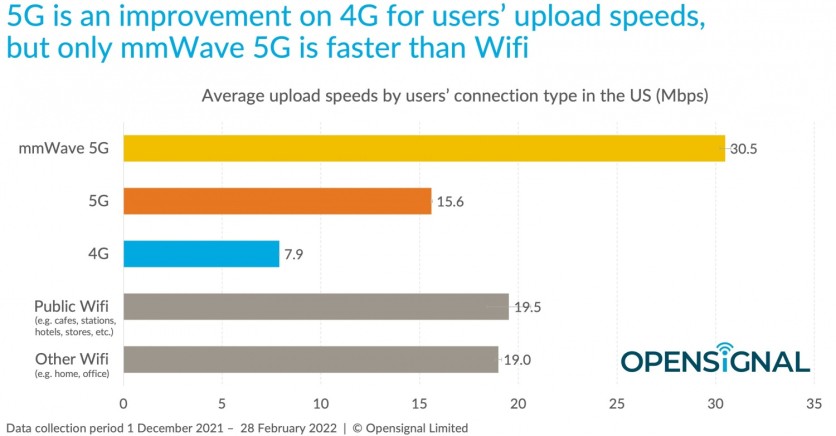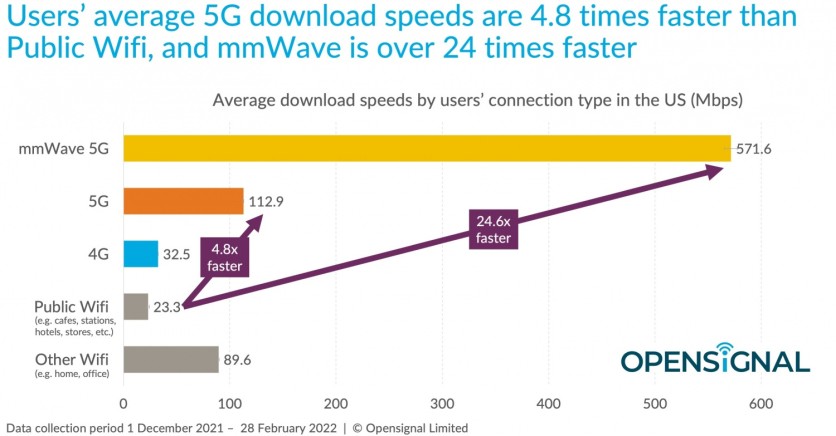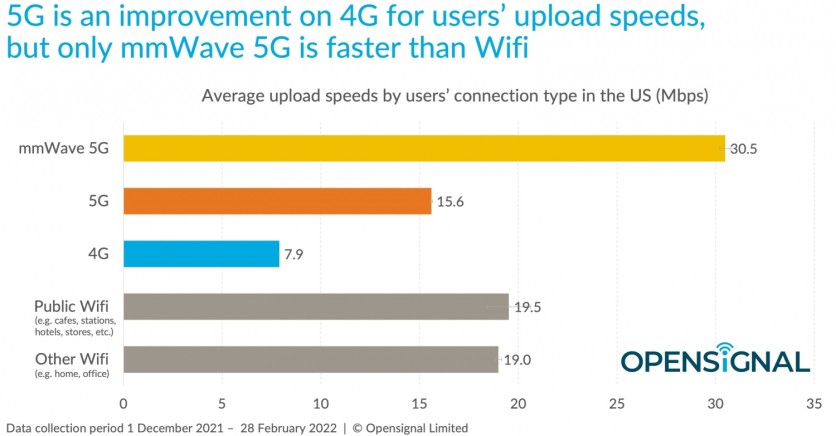As the world moves away from 4G in service of the far faster 5G cellular performance, questions still remain on the overall viability of the varied networks from region to region. Although there is no dispute that 5G is certainly a more powerful option in the face of alternatives, its relative infancy proves there remains a myriad of concerns for its widespread adoption, especially in the face of the far cheaper or oftentimes even free public wifi option.
However, data provided via OpenSignal in its most recently published report points to the diminishing use case for said public wifi as more 5G options become available. The analysis specifically focuses on the US, showcasing how 5G and mmWave 5G are in relation to public wifi counterparts found most prominently in schools, stores, and government buildings.
"There is a transformation in how 5G and Wifi speeds compare from the situation when we last looked at how U.S. Wifi and cellular speeds match up a year ago," reads the report. "Then as now, mmWave 5G was way faster than Wifi. Now for the first time, our users enjoy average download speeds with 5G that are indisputably faster than all types of Wifi network - Public Wifi or Other Wifi."

Despite previous years beating out the competition, it seems a combination of aged equipment, increased congestion, and limited access points have pitted public wifi offerings in the losing group compared to 5G. OpenSignal performed various tests and analyses, the main among them being multiplayer gaming on smartphones, which saw mmWave 5G beating out the rest by a wide margin, while normal 5G came just a bit under "other wifi," referring to home or office offerings.
Related Article: 5G And Airplane Safety: Is It Really THAT Bad? Here Are The Facts

In terms of download speeds, mmWave 5G proved to have zero competition. Weighted by an average Mbps connection type speeds, mmWave 5G toppled the charts with 24.6x faster downloads at 571.6 Mbps, with normal 5G sitting at 112.9 Mbs. Public wifi sat a lousy 23.3 Mbps, proving just how far cellular performance has come in only a year's time.
Interestingly, while downloads fared slightly better on home or office wifi setups in comparison to public wifi, the latter took charge with an average 19.5 Mbps in upload speeds, beating out both 4G and 5G by quite a lot. But, public wifi still pales in comparison to rival mmWave 5G, which once more stole the show at 30.5 Mbps average uploads.

Although base 5G performance proved to be of little hype in OpenSignal's thorough investigations, the organization remains quite optimistic of the potential of the technology moving forward. The team writes:
"With the improvement in 5G over the last year, U.S. carriers now have renewed 5G opportunity...With 5G now able to benefit from new 5G spectrum capacity - mid-bands and C-band - users' 5G experience is being boosted dramatically and is overtaking Wifi on experience, if not in price."
While most may not have available the mmWave 5G - or even, for that matter, the base sub 6Ghz-mid-band 5G offering - its outward adoption, and continued enhancement should make it easier to access across the US. Thus far, the 5G realm is primarily dominated via its earliest adopter, T-Mobile, which has a relatively all-encompassing map set across the US. Following close behind are both AT&T and Verizon, sharing a rather scattered US coverage.
Verizon boasts the most widespread mmWave 5G support yet lacks the ultimate reach, whereas AT&T's 5G+ (its naming convention for mmWave 5G) is only available on a couple of streets set across major cities in America. T-Mobile doesn't exactly have full mmWave 5G capabilities just yet, as it has primarily focused on bridging sub-6 to all of its 4G towers.
It is a bit too early to make any real speculations just yet on its viability and footprint, but 5G home internet is slowly becoming an option through services like T-Mobile and Verizon, yet obviously, it's nothing quite like their conventional 5G mobile coverage. It'll take more time before in-home internet can match the same capabilities as its cellular counterparts, but maybe public wifi will no sooner dominate once more when that option becomes more popular.




